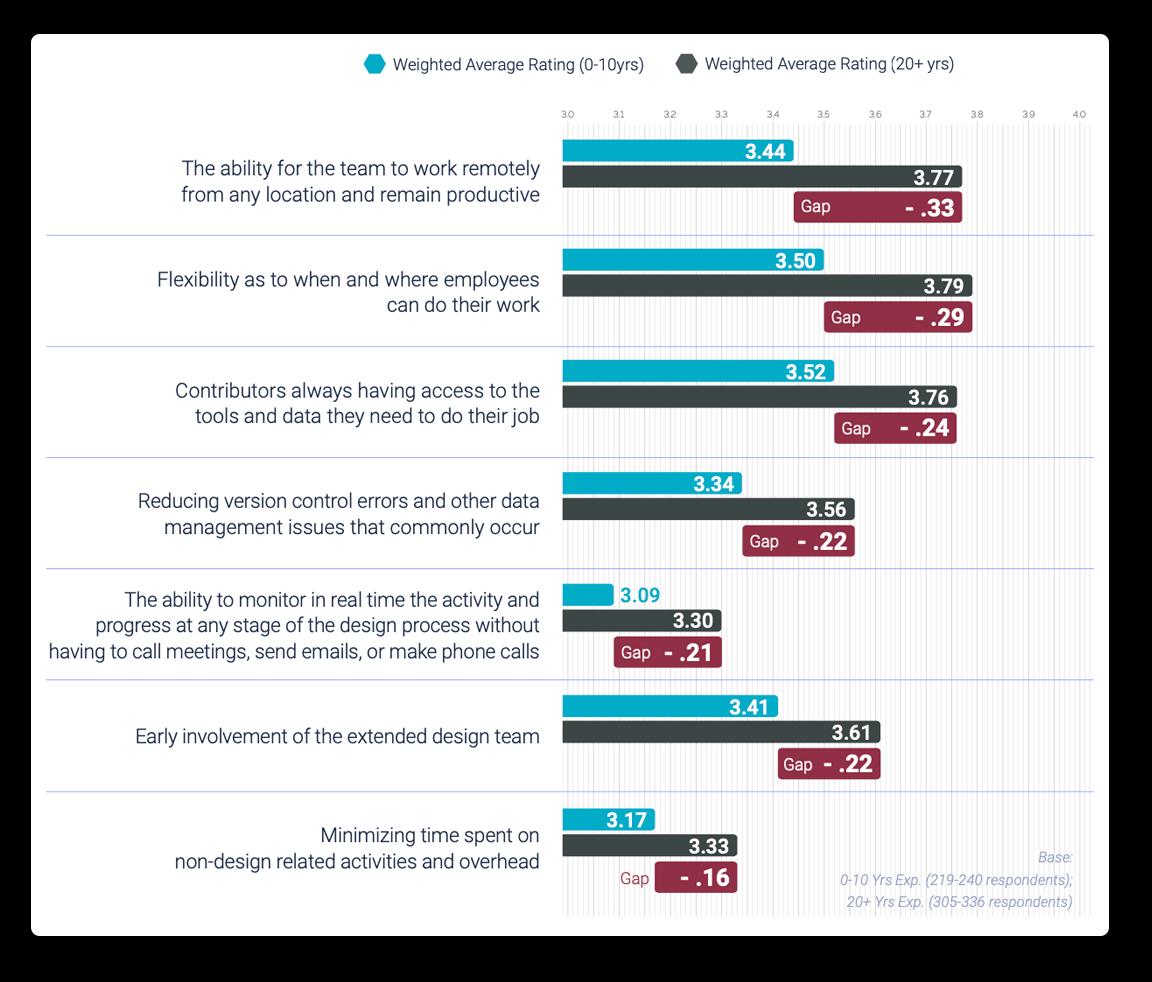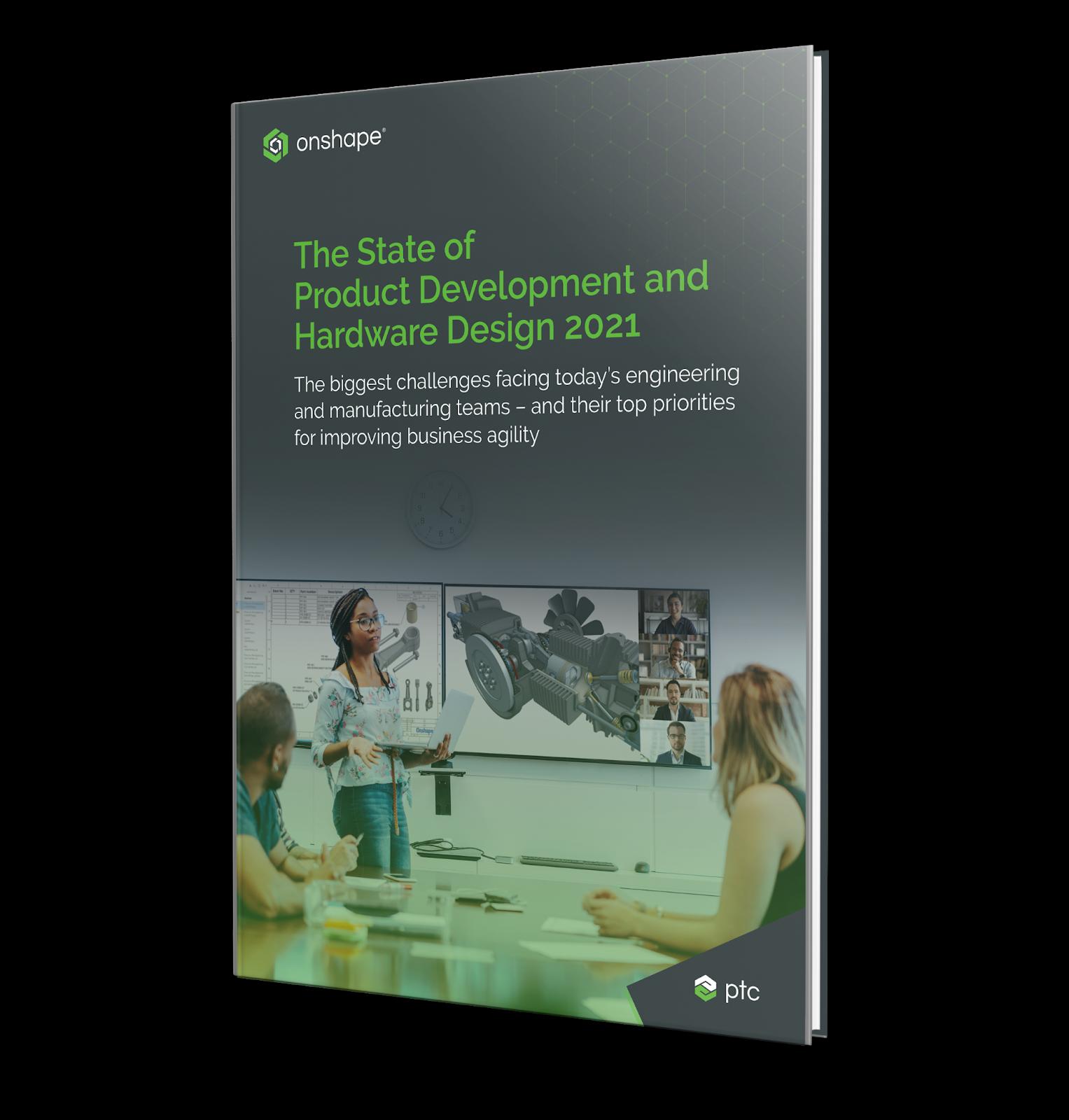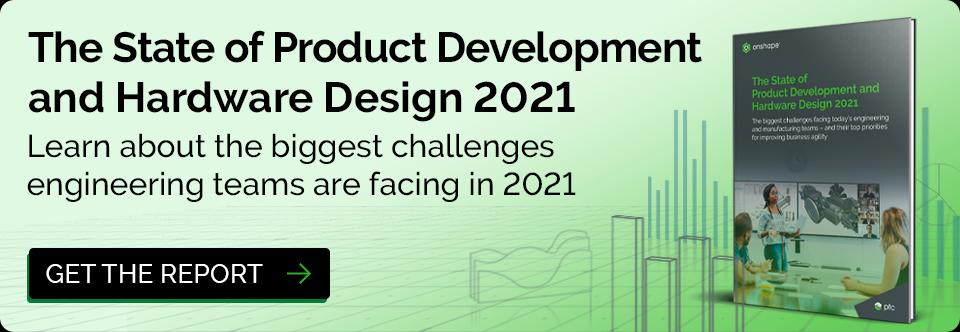
6:01
Millennials and Generation Z make up almost half of the full-time total workforce in the U.S., according to Gallup — and they are demanding changes to the status quo.
There’s a marked difference in what these younger cohorts want from their employers, Gallup found, versus what Generation Xers and boomers look for at their place of work.
For millennials and Gen Zers, it’s important to find a company that cares about the well-being of employees. While the older generations name ethical leadership at their workplace as the number one concern.
Many companies have been trying to bridge this generational gap with revamped wellness programs, increased executive transparency, and by making recruitment more inclusive.
But there is still room to grow for engineering teams, according to The State of Product Development & Hardware Design 2021 report. Onshape commissioned Isurus, a third-party research firm, to conduct a survey to discover issues plaguing product development teams. The report is free and available here.
Gen Z and Millennial Engineers at Work
The goal of the report was to determine the most urgent priorities for improvement in the product development industry. So we asked 800 engineers, project managers and executives to share their thoughts. The survey asked respondents to identify their most important goals and then measure their company’s performance against those goals. Drilling down further into these self-assessments, we wondered if there would be any noticeable differences in answers based on engineers’ years of experience in the industry.
For most survey questions, the answers were very consistent across experience levels. A few categories stood out as markedly different.
After breaking down responses by years of experience, we discovered a consistent pattern of millennials (ages 25 to 40) and Generation Z (ages 24 and younger) being more critical of their companies’ performance in several key product development areas.
As a reminder, survey participants were asked to rate their company’s capabilities on a scale of one to five:
We took the weighted average of these ratings and discovered that established career engineers, managers and executives were consistently giving their product development teams higher scores. Virtually all the weighted scores ended up between 3 and 4 on the 5-point scale, so a deviation of more than 0.15 is significant. Take a look at the chart below:

Engineering Experience vs. Company Perception
Question: How would you rate your company’s current abilities in each of these areas?
Ratings are based on a scale of 1 (Very Poor) to 5 (Excellent)
Source: The State of Product Development & Hardware Design 2021

The survey table above highlights perception gaps between the younger generation of workers and older workers. This is increasingly important for executives to consider as they think about their future pipeline of engineering talent.
- The top areas of concern for Generation Z and millennial engineers were focused on: workplace flexibility, team communication and the technological limitations of current design tools.
- The top generational gap in the chart, “the ability for the team to work remotely from any location and remain productive,” indicates that the desire for increased flexibility to get work done outside the office is significantly more important to younger people than their older colleagues. Engineers with 20+ years of experience also value workplace flexibility but less so, perhaps because they are conditioned to an office-centered career.
- The second-highest gap, “Flexibility as to when and where employees can do their work,” underscores that the new generation of workers not only want to break the chains from the office, but also want to toss out the traditional 9-to-5 work schedule. They may want to walk their dog for two hours midday, or go shopping, while continuing their work in the evening hours. Control over how one allocates their work schedule is being increasingly seen as an important benefit.
- Note that Gen Z and millennial engineers in this survey also give their employers lower scores for being able to monitor real-time design progress without sending emails or scheduling meetings. These are the generations that prefer texting over phone calls (or even face-to-face communication) and grew up Googling any information they needed in seconds. The idea of not being able to access information instantly is bothersome to engineers of all ages, but to the youngest generation in the workplace, it is heresy.
- It is worth noting that these generational gaps are all related to being able to find information on your own, always having access to your data anytime and anywhere, work flexibility, easy, asynchronous peer-to-peer communication, and instant availability (no installs, IT headaches, etc.). These findings are very consistent with our qualitative understanding of the digital-native generation.
- Underscoring the millennial/Gen Z thirst for instant information, engineers with 0-10 years experience were also twice as likely to increase their use of Slack over the past year.
How to Retain Gen Z and Millennial Engineers
Hiring the right talent and employee retention are some of the most important factors in a company’s long-term success. Understanding the mindset of the younger sector of the workforce is absolutely critical. Gallup has dubbed millennials as the “Job-Hopping Generation,” recently finding that 1 out of 5 workers from this demographic switched employers over the past year – three times the rate of non-millennials. Gallup estimates that millennial turnover alone results in an annual loss of $30.5 billion to U.S. companies.
Companies who want to recruit and retain talent of any age are realizing that offering more workplace flexibility may be as important as a competitive salary and benefits.
While wellness programs, increased leadership transparency, and a set of diverse colleagues can attract and keep millennials and Gen Zers, providing the right tools to get work done also plays a role, as shown by the results from The State of Product Development and Hardware Design 2021 report.
In product development teams especially, it’s important to identify issues that hold up workflow. By providing the right tools, like cloud-native Onshape, the younger cohorts of the workforce can work anytime, anywhere; get the information they need when they need it; and collaborate with ease.
More on “The State of Product Development and Hardware Design 2021”

Want to learn about potential areas of improvement for your product development team? In addition to exploring the Generational Gap, this 2021 industry survey also offers insights on the following topics:
- The Capabilities Gap – Companies self-rated their actual performance vs. their desired goals across specific areas of the design and manufacturing process.
- Reducing Wasted Time – The survey reveals the big time wasters in the design workflow, such as looking for the correct data or accessing information.
- Data Management Challenges – On-premise PDM/PLM users reveal how their software gets in the way of team collaboration and slows down the workflow.
- The Perception Gap – Executives consistently have a rosier view of their design capabilities than project managers or individual contributors. Is this a sign of poor internal communication?
- Workplace Flexibility – Does more flexibility translate into more productivity? (Yes.)
- Pandemic Impact – Learn from the experience of product development teams how priorities have changed since remote work became the norm.
Download your free copy of The State of Product Development and Hardware Design 2021 today and discover the best opportunities for improving business agility.

Latest Content

- Case Study
- Consumer Products
BOA Technology: Redefining Outdoor Fit Equipment with Cloud-Native Onshape
11.03.2025 learn more
- Blog
- Becoming an Expert
- Assemblies
- Simulation
Mastering Kinematics: A Deeper Dive into Onshape Assemblies, Mates, and Simulation
12.11.2025 learn more
- Blog
- Evaluating Onshape
- Learning Center
AI in CAD: How Onshape Makes Intelligence Part of Your Daily Workflow
12.10.2025 learn more
- Blog
- Evaluating Onshape
- Assemblies
- Drawings
- Features
- Parts
- Sketches
- Branching & Merging
- Release Management
- Documents
- Collaboration
Onshape Explained: 17 Features That Define Cloud-Native CAD
12.05.2025 learn more


